Tag: oral history center
Announcing SCIP’s Oral History Agreement Toolkit: Protecting Narrators and Improving Institutional Rights Administration

The Scholarly Communication & Information Policy (SCIP) office is pleased to announce the release of our Oral History Agreement Toolkit—a collection of templates, guidance documents, and resources that we created to help institutions approach oral history agreements.
The Oral History Center participated in the process to help SCIP to develop this toolkit. These agreements were developed specifically to meet the legal requirements of UC Berkeley. For guidance on letters of consent and legal agreements more broadly, especially for independent oral historians, please consult the Oral History Association’s best practices.
Why We Created This Toolkit
Over the past two years, SCIP worked to improve oral history agreements in ways that we believe:
- Conform to current Oral History Association Best Practices, including flexibility on signing timeline preferences
- Resolve the “version of record” as between edited and unedited audio and transcripts
- Ensure consistency in representations to narrators, by having an integrated agreement
- Address privacy and defamation
- Standardize terms
- Define use and access rights by the institution in the event that narrators pass away or disengage after completing the interviews
- Resolve ambiguities for downstream granting of usage permission and licenses by the institution
Generally speaking, past approaches to oral history agreements have often created an imbalance between narrators and institutions. Our new toolkit addresses this by:
- Centering narrator agency and control over their stories and how they’re shared;
- Improving rights administration for libraries and oral history programs;
- Providing clear, accessible language to explain complex legal concepts; and
- Creating flexibility through multiple agreement options that accommodate diverse needs.
What’s Included in the Toolkit
There are two key documents in the toolkit:
SCIP created both of these documents as training materials we presented to the UC Berkeley Oral History Center, but we believe they may be adapted, repurposed, and improved upon by other institutions.
The “Talking Points for Conversations” document is really the leading tool here, and includes:
- Agreement templates: Customizable templates covering a variety of narrator needs and signing scenarios (e.g. signing before the interview, signing after the interview, funded oral histories, deceased narrators, etc.);
- Explanatory Materials: Detailed talking points to help oral historians explain each clause in plain language;
- FAQs: Addressing common questions, including specific concerns for historically marginalized communities; and
- Sample Scenarios: Real-world examples showing how the agreements work in practice.
Key Benefits for Narrators
The template agreements protect narrators by ensuring they:
- Can review and correct transcripts before finalization
- May withdraw participation at any point before final approval
- Can restrict access to sensitive portions for specified time periods
- Retain the right to use their own stories regardless of copyright decisions
- Can request removal of identifying information about third parties
- Have clarity about their rights and responsibilities
Enhancing Institutional Practice
For libraries and oral history programs, the toolkit helps:
- Establish clear legal frameworks for rights management
- Reduce risk related to third-party claims
- Create flexible options for different interview scenarios and signing preferences
- Provide consistent language for explaining agreements to narrators
- Address complex situations like posthumous agreements and funded projects
Accommodating Narrator Requests for Modifications
A key principle underlying this toolkit is flexibility. The agreements can be modified to better reflect narrators’ comfort levels and preferences. If a narrator requests changes to the standard terms (additions, deletions, etc.), you can consider whether you are able to accommodate those requests.
In our case, we outline our own processes for:
- Modifications: Changes requested before signing
- Amendments: Changes requested after signing, including rights and embargo selections and substantive term modifications
Customization Is Expected and Encouraged
We recognize that institutions have diverse practices and needs. And we do not expect that these templates or materials will work for everyone!
In addition, institutions must make policy decisions even if they decide to utilize these materials. For instance, what range of embargo time periods are you willing to offer? Do you want to allow narrators to redact information once they’ve shared it? How do you wish to convey or encourage Creative Commons licensing options?
The toolkit is designed merely as a foundation—a starting point for important conversations about reforming oral history practices at your institution. We encourage programs to:
- Review the materials with institutional stakeholders, including legal counsel
- Adapt the templates to align with your specific circumstances and policies
- Use the talking points as a basis for developing your own communication strategies
- Consider the sample scenarios as illustrations rather than prescriptive examples
Getting Started
We invite you to explore these resources and consider how they might enhance administration of your oral history agreements. We believe the toolkit offers valuable perspectives on balancing ethical responsibilities to narrators with practical institutional needs.
As you begin to use these materials, we welcome your feedback at schol-comm@berkeley.edu. Your experiences and insights will help us continue to refine these resources to better serve the oral history community.
The Scholarly Communication & Information Policy (SCIP) office provides guidance on copyright, publishing, and information policy matters to support the research and teaching mission of our institution.
Richard Wyatt, Jr.: A Blessed Life of Art and Music
In February 2023, Dr. Bridget Cooks and I had the pleasure of interviewing the Los Angeles-based visual artist and songwriter Richard Wyatt, Jr., for the Getty Research Institute’s African American Art History Initiative. Wyatt was a joy to interview, making us laugh constantly and sharing what he called Forrest Gump moments, where he was in the right place at the right time to meet and collaborate with celebrities of all stripes.
A little over a year after this delightful interview, Bridget and I were saddened to hear that Richard had passed away in May 2024. The world has lost a kind and funny man, as well as an talented artist, musician, educator, and thinker.
While I continue to mourn Richard’s passing, I also want to celebrate his life by highlighting the wonderful stories he shared in his oral history about life, art, music, and seeking new challenges.
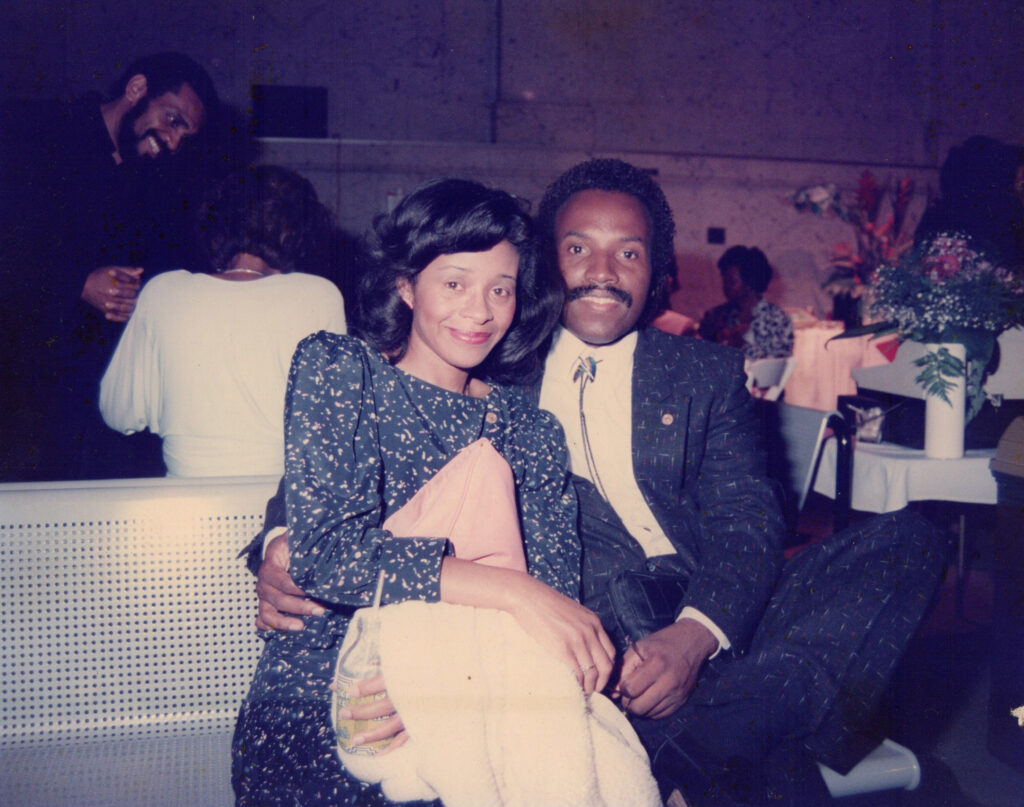
Richard Wyatt, Jr., was an artist whose work includes drawings, paintings, installations, and public art. Wyatt was born in Lynwood, California, in 1955, and lived in the Los Angeles area his whole life. He began his art career early, winning the Watts Chalk-In at twelve years old, and then studying at the Watts Towers Art Center, the Chouinard Art Institute, and the Tutor/Art Program with artist Charles White. Wyatt attended the University of California, Los Angeles, where he earned a BFA in art. Some of his best-known work in Los Angeles includes the mural Hollywood Jazz: 1945-1972 on the Capitol Records Building; the mural City of Dreams, River of History in Union Station; and the installation Ripple of Hope at Robert F. Kennedy Inspiration Park. Wyatt taught drawing and painting at the University of California, Irvine; the Otis Art Institute; and the Watts Towers Art Center. He also had a career as a songwriter, writing songs for musicians like The Miracles, The Sylvers, and New Edition.
One thing that continues to strike me about Richard is the indelible mark he has left on the world—and I mean that literally. Some of Richard’s best-known work was his public art, which adorned buildings and other public places in the Los Angeles area and beyond. For this reason, Bridget found interviewing Richard almost surreal. In the oral history, she explained, “…your work is part of my Los Angeles,” for indeed, Richard’s public art shaped the city in which she grew up. After our first day of interviews, Cooks and I drove around Downtown Los Angeles, pointing out and visiting sites where Richard’s work dotted the landscape: Union Station, Robert F. Kennedy Inspiration Park, the Capitol Records Building, and on and on.
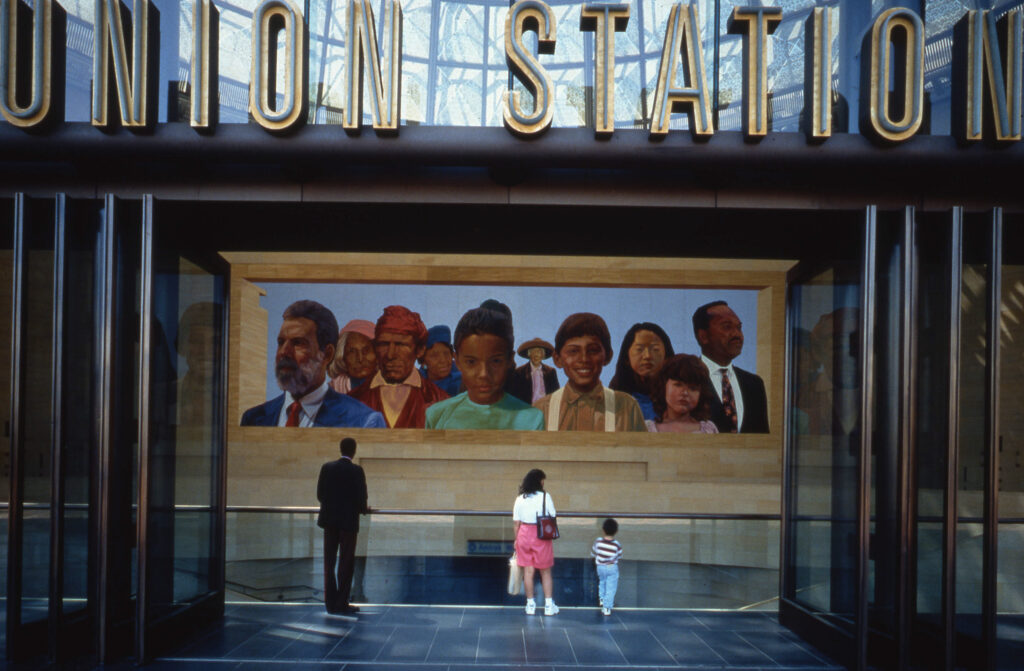
One of Richard’s most famous murals, Hollywood Jazz: 1945-1972, remains on the Capitol Records Building, although he later replaced the paint on this south-facing exterior wall with ceramic tile to combat the ravages of the sun. When Richard accepted the commission for this work, it was the perfect blend of his love of visual art and his passion for music. In this mural, he memorialized jazz greats, such as Billie Holiday, Ella Fitzgerald, Miles Davis, and Nat King Cole. And in one of those Forrest Gump moments, Richard met musician Bonnie Raitt on site at the Capitol Records Building during his original installation. Listen as Richard recounted this moment:
Richard also mused about the role of an artist after unveiling a work of public art, sharing his thoughts on the impact of his public work: “…you can’t control it…Once it’s out there, it’s out there. People are going to interpret it and take pictures.” And while we spoke about the joys of creating art for wide public consumption, Richard also acknowledged some of the challenges inherent in this work. Listen as Richard shared about some of his public art work with collaborator and fellow artist May Sun:
Richard’s talent also extended to music, and resulted in a prolific career as a songwriter for musical artists such as The Miracles, The Sylvers, Peaches & Herb, Tavares, Johnny Gill, and New Edition. Richard wrote his first song, “Keep on Keepin’ On (Doin’ What You Do)” for The Miracles when he was just eighteen years old. But for Richard, visual art and music were always intertwined, as he experienced synesthesia, a sensory condition in which, among other things, allows some people see colors when they hear music. Richard explained his synesthesia this way:
“I didn’t even know that term until somebody else told me…When I’m writing, that’s one thing. But once I start arranging it and getting the bass and guitar, and then you get strings and horns, there are certain sounds that have a color associated with them. I can’t explain it, but…I see colors once I hear a certain sound, you know? And when I’m creating the arrangements, or even mixing or whatever, and I’m going for a certain effect, it’s like once you get mixing, to me it’s like glazing in oil. That’s the easiest way I can explain it.”
Richard was a child prodigy who burst into the art world when he was twelve years old, rubbing elbows with more experienced art world talents like Charles White, John Riddle, George Evans, and Bill Pajaud. Yet, Richard carved out a career all his own. And while he left us too soon, Richard’s art lives on. To celebrate this remarkable man and artist, I suggest spending time in Downtown Los Angeles and experiencing the work of Richard Wyatt, Jr., for yourself.
To learn more about Richard Wyatt, Jr.’s, extraordinary life and work, explore his oral history!
About the Oral History Center
The Oral History Center of The Bancroft Library preserves voices of people from all walks of life, with varying political perspectives, national origins, and ethnic backgrounds. We are committed to open access and our oral histories and interpretive materials are available online at no cost to scholars and the public. You can find our oral histories from the search feature on our home page. Search by name, keyword, and several other criteria. Sign up for our monthly newsletter featuring think pieces, new releases, podcasts, Q&As, and everything oral history. Access the most recent articles from our home page or go straight to our blog home.
Berkeley SLATE-d for Back to School: Student Community in the Sixties
By Natalie Naylor
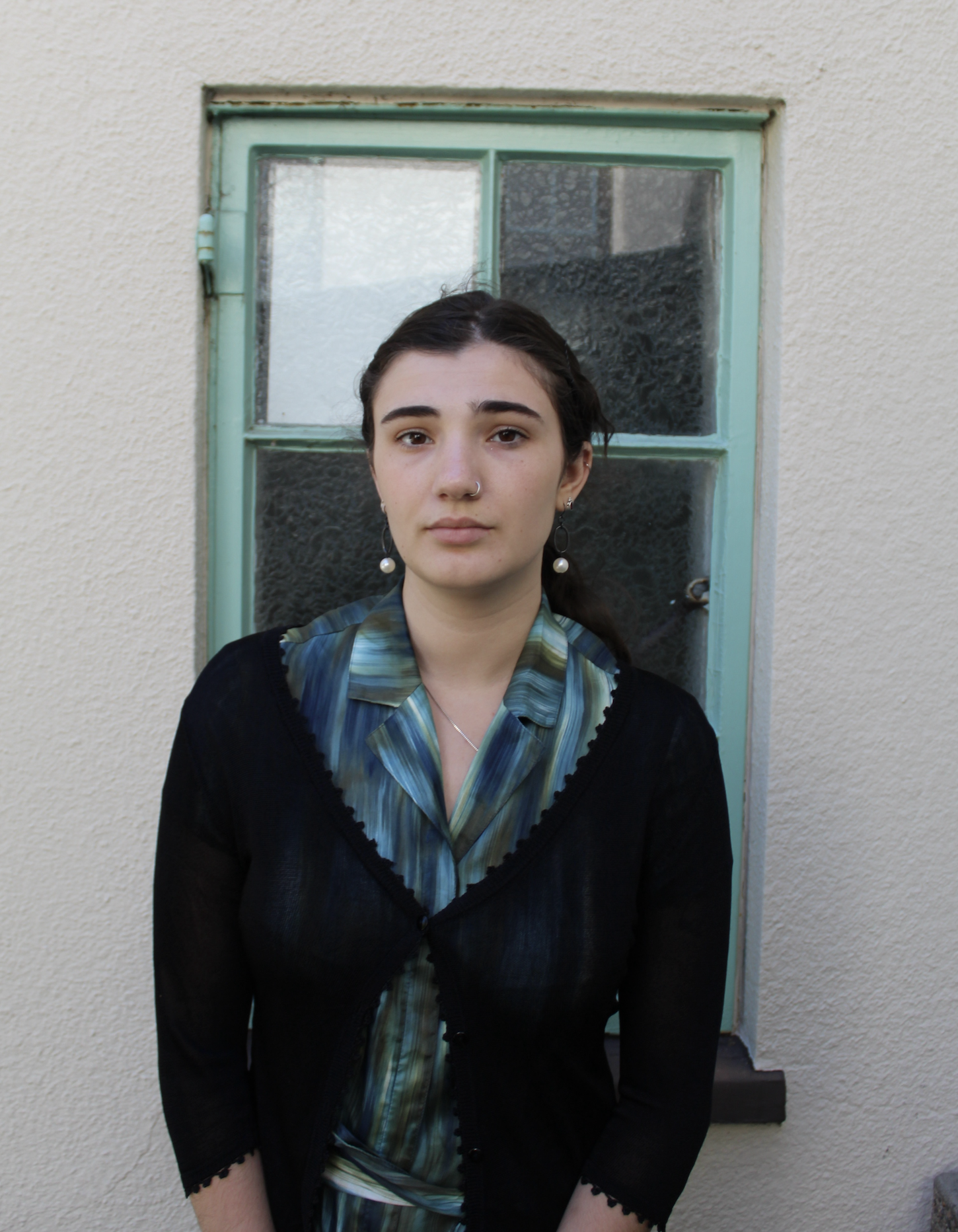
Natalie Naylor is a fourth-year undergraduate studying English and Creative Writing. She’s lived in the on-campus dorms, specifically Unit 2, and two Berkeley Student Cooperative properties during her time at UC Berkeley.
Well, it was magnificent! First of all, it was beautiful. I mean, Berkeley in the sixties was just a great place to be. It was very exciting; there were all kinds of new ideas. I loved my classes; I quickly made very good friends.
– Julianne Morris, SLATE Project
Berkeley in the 1960s is a time our campus and its surrounding community look back on with pride. During these years, UC Berkeley students, faculty, and community members participated in civil rights protests, antiwar activism, and, of course, the Free Speech Movement; these efforts are no doubt some of the most significant moments in Berkeley’s history. From the Mario Savio Free Speech Movement Café to the Martin Luther King Jr. Building and Free Speech Monument in Upper Sproul Plaza, the built environment referencing social activism in the sixties incorporates physical tributes to this time throughout UC Berkeley’s contemporary campus.
Sixty years later, as the Fall 2024 semester begins, it’s easy to feel as though that time in our history is completely removed from the present. However, students in the 1960s were concerned with issues familiar to UC Berkeley’s current student body: housing, humanitarianism, belonging, freedom of speech, and community building. This includes many of the members involved in the campus political group SLATE in the late 1950s and early 1960s. The Oral History Center’s SLATE Oral History Project documents the experiences and budding political consciousnesses of some of the students involved in on-campus activism at UC Berkeley sixty years ago.
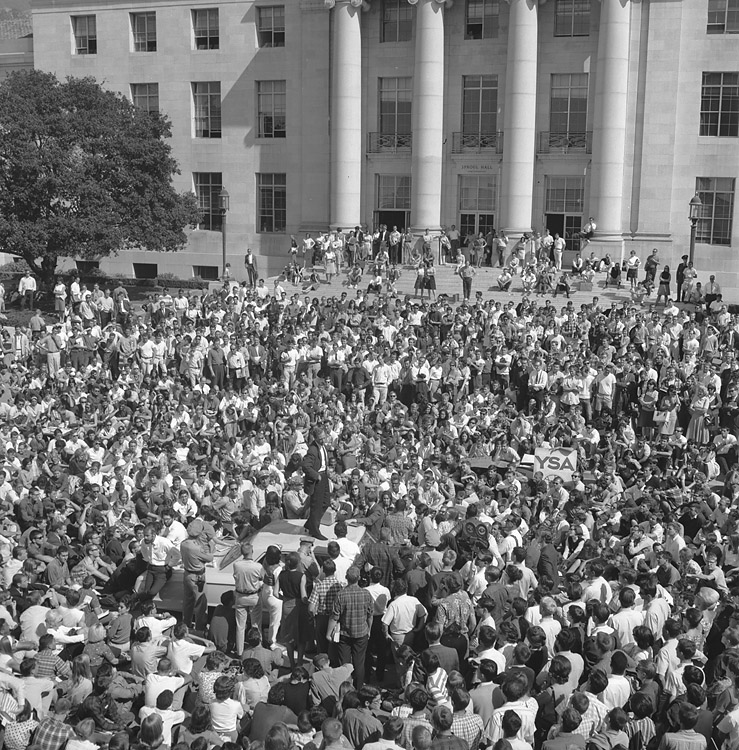
SLATE was a political party on UC Berkeley’s campus from 1958 to 1966 and, therefore, predated the Free Speech Movement. Its main goal: to present candidates for the Associated Students of the University of California (ASUC) office who supported racial equality and free speech on campus.
Jackie Goldberg, an undergraduate social science major in the mid-sixties, was one of the most well-known student activists involved in SLATE at UC Berkeley. She initially joined SLATE because of her passion for civil rights, as well as the strong community and support from other student activists on campus at the time. Her oral history is a part of the Oral History Center’s Free Speech Movement Oral History Project but chronicles the work she did with SLATE in detail.
When she arrived on campus, Goldberg underwent a year of dorm living—still a staple of the UC Berkeley freshman experience. After that first year in the dorms, she encountered a lack of housing on and around campus, which is a lasting issue at Cal. To secure housing for her second year, she participated in the sorority rush process and became a member of Delta Phi Epsilon. Goldberg claims that due to her Jewish background, most other houses declined to offer her membership. Experiencing this prejudice firsthand likely later influenced her activism in fighting discrimination in Greek life. In her oral history, she describes her housing journey as such:
I had applied to the co-op. I had applied to the dorms, and I didn’t get any of them. I was on the wait list for both. So my game plan was I would go in for a semester, try to grow up so I could get an apartment, find someone to get an apartment with…but it turned out that I was in this free-wheeling place, with a lot of nice people, some of whom are still my friends…and it was so easy. I didn’t have to cook, I didn’t have to clean, I didn’t have to shop, and it was cheap because I was doing the house bills.
Despite originally joining the sorority for housing reasons, Goldberg grew an affinity for the culture of her house and its lifestyle. In her oral history, she recalls: “I stayed all three years. I had no desire to leave.”
Goldberg thrived in community with other members of Delta Phi Epsilon and SLATE during her time at UC Berkeley. Her activist work and living situation occasionally overlapped, like while advocating for the racial integration of sororities at Cal. At the time, Greek life had a vast political presence on campus; Goldberg both embraced and challenged this precedent to incite political change at UC Berkeley. She succeeded in encouraging other sororities to desegregate, despite the decision sometimes diverging from their national organizations and sister-chapters.
Julianne Morris, another member of SLATE, had a less positive experience in an all-women’s housing arrangement around the University of California, Berkeley’s campus. While studying at UCLA, Morris founded the organization PLATFORM, inspired by conversations she’d had with members of SLATE. After craving more involvement in student politics, she transferred to UC Berkeley in the early 1960s and selected housing based on connections she’d previously made through SLATE. Morris recalls:
My first semester I was in a co-op, Stebbins Hall, and so I met a lot of women friends there. And of course, you know, it was very different then. There was a curfew, where you had to be in—and God forbid that there were any men there at night.
Even in the sixties, the University maintained in loco parentis authority over its female students from which it exempted male students. These unequal restrictions were especially apparent when it came to women’s housing accommodations. Because of this, although she found community both in SLATE and at Stebbins, Morris eventually sought more autonomy by moving to her own apartment after one semester in the co-op system. She explains:
Oh, I liked the idea of being freer. And you know, I hated having to come in at a certain time and no men in the house and the whole way things were at that time. And so I was very happy not to be in a dorm or a co-op anymore and be on my own.
Despite graduating sixty years ago, many of the buildings around UC Berkeley’s campus are part of a continuous built environment that would be physically recognizable to Morris and her peers.
In 2024, there are still two Berkeley co-ops designated for female-identifying students only, but no all-male-identifying cooperatives remain. One historically men-only house was Barrington Hall, which closed in 1989.
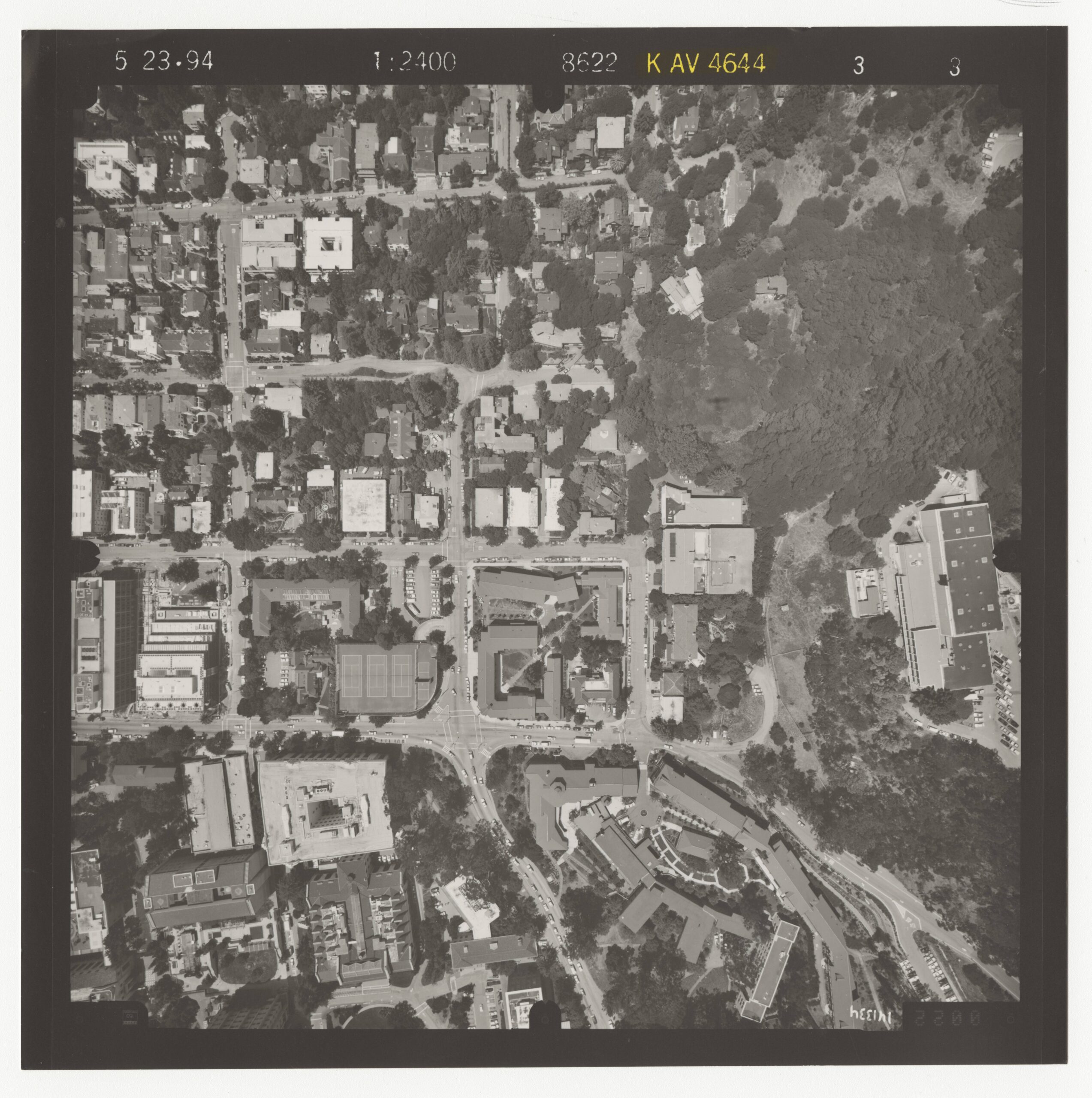
David Armor, a founding member of SLATE, lived in Barrington Hall while attending UC Berkeley, and participating in student government and campus activism. In 1959, he became the first and only member of SLATE to be elected as ASUC President. Armor describes his experience living at the student cooperative Barrington Hall during his freshman year as such:
Again, as a very poor student, I chose the cheapest housing, which was…a cooperative, Barrington Hall, terrible building, really not in good shape…there was a two-person bedroom, two two-person bedrooms, and then a one-person bedroom, so five people sharing a bathroom. And co-op means that you did the work…You work. You did the food, the serving, the cleaning, and everything, that’s how you paid, why the fees were so low. So you basically worked to provide all the services.
However, after a semester, Armor also decided to transition to an apartment. While making this change, he and his roommates integrated some of the cooperative practices they adopted from Barrington into their new living dynamic. Armor reports this influence as having a positive impact on his development as a young adult:
So we got an apartment in the second semester of my freshman year, and five roommates, and we divided up the chores, cooking and whatever, and that was a great experience, because we [were] becoming independent, and living on our own.
Armor’s desire for strong community and cooperation mirrors the effective practices of SLATE’s grassroots political advocacy approach. Housing was one of the main issues of SLATE’s political platform, and the group supported the Berkeley Fair Housing Ordinance in 1959. SLATE also opposed the University’s compulsory ROTC program for male freshmen and sophomores. Members defined SLATE by its beliefs in student organizations, advocacy, and the right for personal academic freedom on UC Berkeley’s campus and its surrounding areas. Communal living, even on an apartment scale, is still a method of community building for students at UC Berkeley. In addition, cooperative living situations are often regarded as financially accessible for a wide range of students looking for housing in Berkeley. Armor and other SLATE participants likely resonated with communal styles of living because of their political and personal beliefs, as well as their material needs.
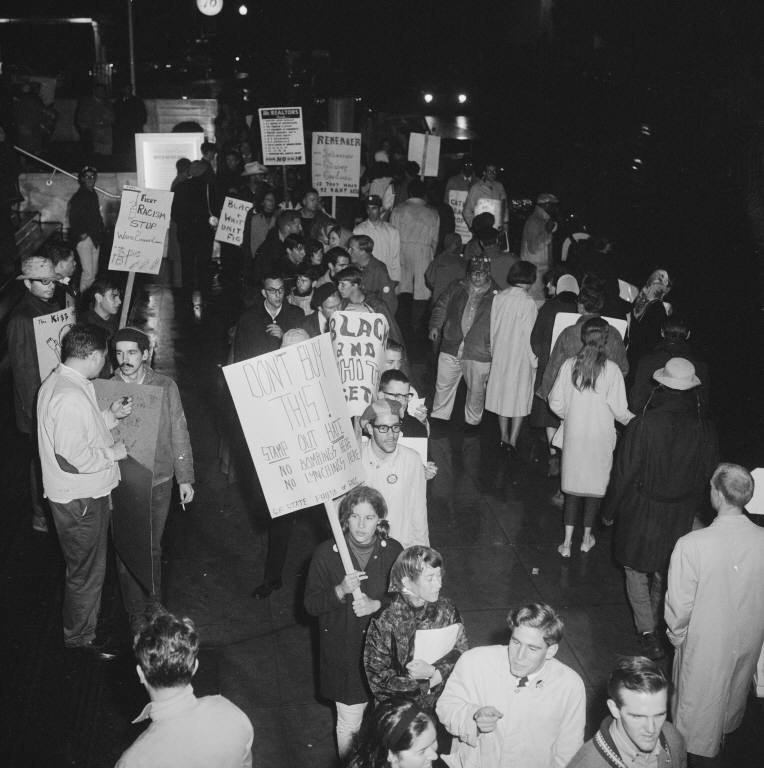
Over the past sixty years, both Barrington Hall and the UC Berkeley chapter of the Delta Phi Epsilon sorority have closed; the physical structures where they were once housed are the largest reminders and evidence of their impact on campus. Stebbins Hall, Morris’s first housing experience at Cal, is still operational as a student cooperative, and has been co-ed since 1971. In short, the built environment since the time of the Free Speech Movement on Berkeley’s campus has both endured and been changed in ways that would feel substantial to former students and members of SLATE.
The activists highlighted here craved more autonomy and less censorship in both their campus and housing climates. They were able to socially campaign for their beliefs as a result of cross-community building practices. Goldberg, Morris, and Armor all lived in houses with a built-in social element; this was likely a great opportunity for idea-sharing and recruitment for SLATE’s cause, as well as a way to foster meaningful connections with their housemates. Their interviews reveal the importance and impact of these connections, as well as the places in which they were formed. What these narrators recall best from their time at UC Berkeley—outside of their work with SLATE—is not classes or grades, but instead the places they lived and the communities of people they built in those places. Indeed, Goldberg, Morris, and Armor’s individual memories of student-led activism and the communities that emerged from, and around, that work have remained strong sixty years on.
About the Oral History Center
The Oral History Center of The Bancroft Library preserves voices of people from all walks of life, with varying political perspectives, national origins, and ethnic backgrounds. We are committed to open access and our oral histories and interpretive materials are available online at no cost to scholars and the public. You can find our oral histories from the search feature on our home page. Search by name, keyword, and several other criteria. Sign up for our monthly newsletter featuring think pieces, new releases, podcasts, Q&As, and everything oral history. Access the most recent articles from our home page or go straight to our blog home.
Freedom Summer and Its Legacy: Berkeley Sixty Years Later
By Sophia Faaland
Sophia Faaland is a third-year student at UC Berkeley studying history. They are an Undergraduate Research Apprentice and Archaeological Field Student for the Nemea Center. Sophia works at the Oral History Center as a student editor.
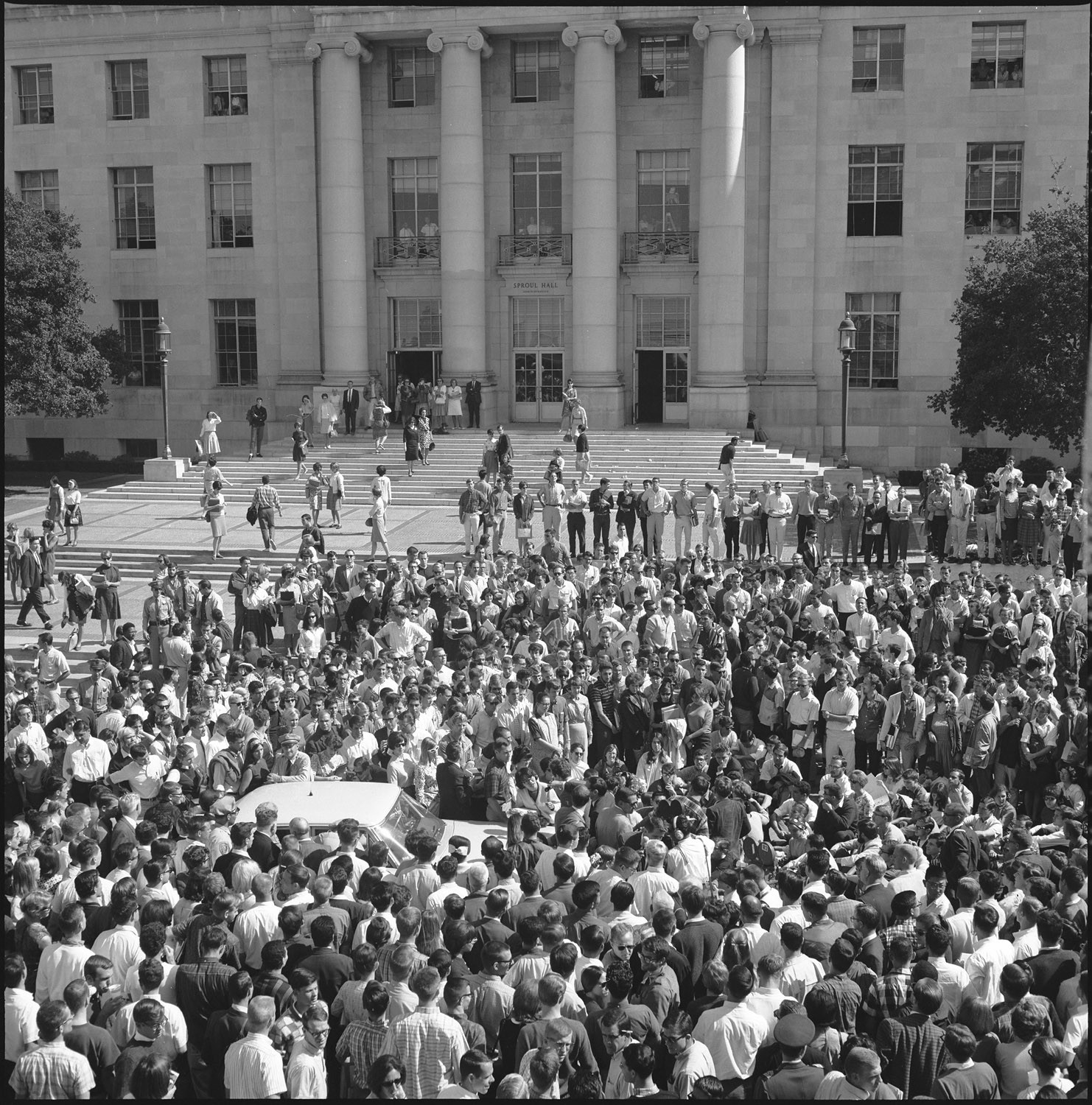
Freedom Summer in 1964 was a landmark moment in the Civil Rights Movement that challenged systemic racism in the United States. Activists—typically white, college-educated, and from Northern states—volunteered to travel to Mississippi and Louisiana to direct national media attention towards Jim Crow Laws and racist violence that prevented Black people from voting in Southern states. The ultimate goal of Freedom Summer was to end racial inequality in the Deep South, and ensure constitutional liberties for all people living in the United States. Organizations such as CORE (Congress of Racial Equality), SNCC (Student Nonviolent Coordinating Committee), NAACP (National Association for the Advancement of Colored People), and SCLC (Southern Christian Leadership Conference) all recruited, trained, and coordinated activists for Freedom Summer. Once there, activists faced the legacy of deeply-rooted systemic racism in the United States that had shaped elections.
Beginning in the late nineteenth century, politicians in the American South designed excessively complex voter registration forms in order to privilege white people attempting to register over Black people—regardless of the quality of responses. For instance, forms without a dot above the letter “i” would be disregarded entirely if they were filled out by a Black person. To combat this, Freedom Summer activists provided workshops for Black residents to navigate deliberately unforgiving voter registration forms, and taught literacy classes in Freedom Schools.
This moment in history drew on decades of activism from the Black community, accelerating the passage of the Civil Rights Act in July 1964 and the Voting Rights Act in August 1965. The integrated effort of Freedom Summer helped popularize the movement for civil rights legislation across the country, and reached many pockets of American society, including the UC Berkeley campus. On this sixtieth anniversary of Freedom Summer, it is important to acknowledge that the movement did not happen long ago. This recent, violent struggle for civil rights illustrates the aggressive power of white supremacy in American society and its persistence in American politics. UC Berkeley’s Oral History Center features interviews with narrators who experienced this critical moment in civil rights history firsthand. Their memories of civil rights activism include the period before Freedom Summer, during Freedom Summer itself, and the movement’s impact on UC Berkeley. The Oral History Center does not currently have any interviews of Black activists who participated in Freedom Summer.
Before Freedom Summer, UC Berkeley Professor Olly Wilson was a Black participant in civil rights activism across the United States. In the late 1950s, while working to obtain his bachelor’s of music at Washington University, he was also an active member of CORE, where he volunteered for test cases. Civil rights organizations frequently used test cases to prove racial discrimination and, subsequently, define new anti-discriminatory law. Wilson recalls the process of gathering evidence of racial inequality for CORE test cases:
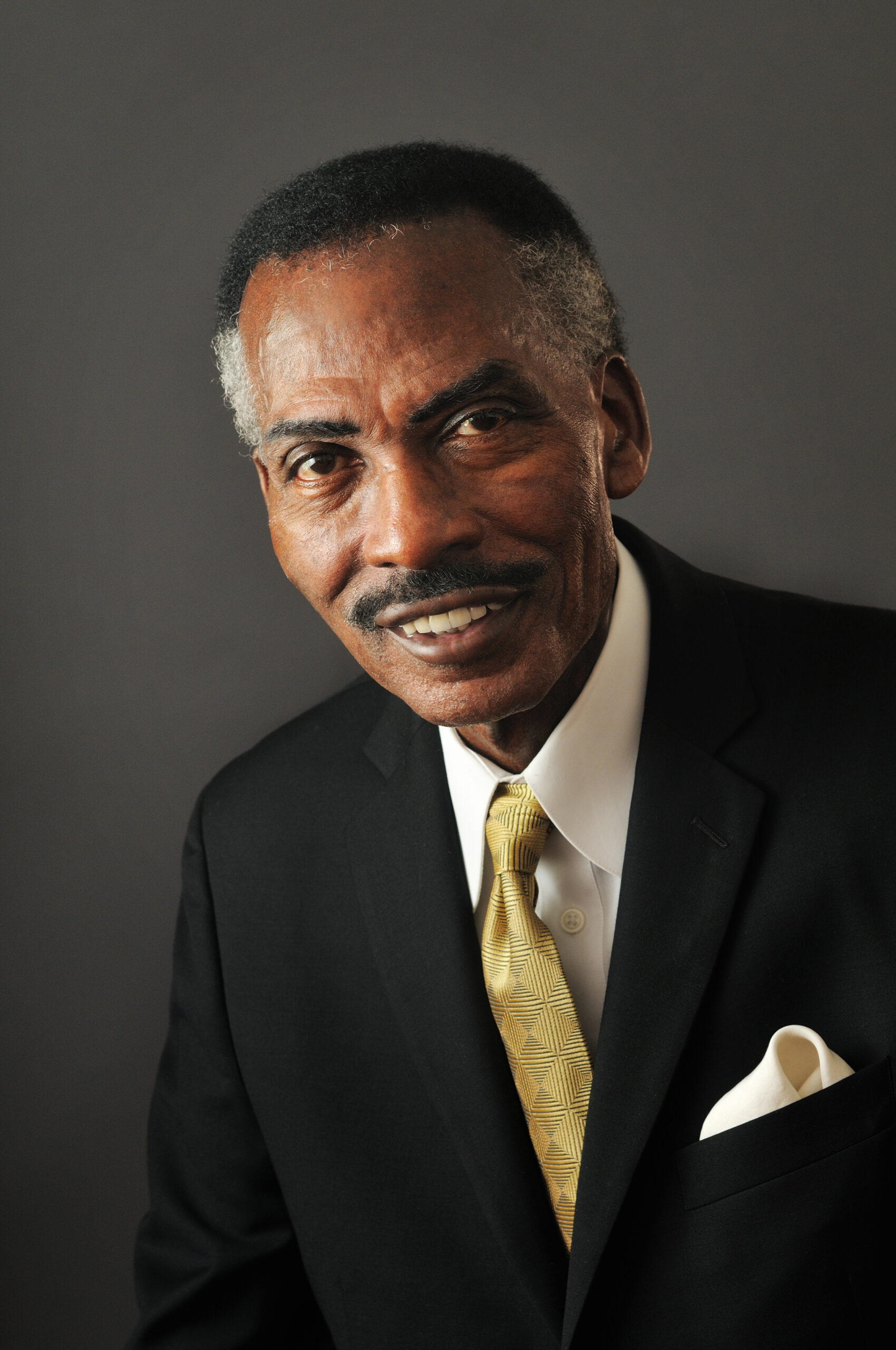
What we would do is to have a Black person go into a hotel or restaurant by himself and he would either be served or not served. Then you’d have a Black and a white person go in and they would be served or not served. Then you would have a white person go in, the same white person go in by themselves, and you are both creating valuable data for legal challenges and pointing out the inanity of it all.
In 1960, Wilson accepted an academic appointment at the University of Florida A&M, and traveled to the Deep South with his wife, Elouise. On this journey, he witnessed Jim Crow laws in action and stark segregation for the first time. In his oral history, Wilson discusses Elouise’s experience of determining the correct car while transferring trains in New Orleans. He describes how segregation was discriminatory and nonsensical:
When she gets in the train, she notices that this is a brand new, beautiful, clean car, and she looked in the corner and nobody else was there but white folks, you know. So, she was wondering, “Well, maybe I am in the wrong car…” Now, Elouise is light skinned, and sometimes, if you don’t look at her right, you know, you might not know what race she is, you know. So, she was afraid people didn’t look at her right, so she came out, because she thought, “Well, if I get on this car and then Olly comes, they are definitely going to send him to the Black car, and I will be up here and he will be at that end…”
One year after the Wilsons’ journey to Florida, Freedom Riders boarded buses and trains through Mississippi to advocate for legislation ending segregation on interstate public transportation. In 1961, Mimi Feingold Real, a civil rights activist with CORE, was jailed for her participation in the Freedom Rides. Feingold Real recalls that the purpose of the Freedom Rides was to draw national media attention to Mississippi’s segregationist laws:
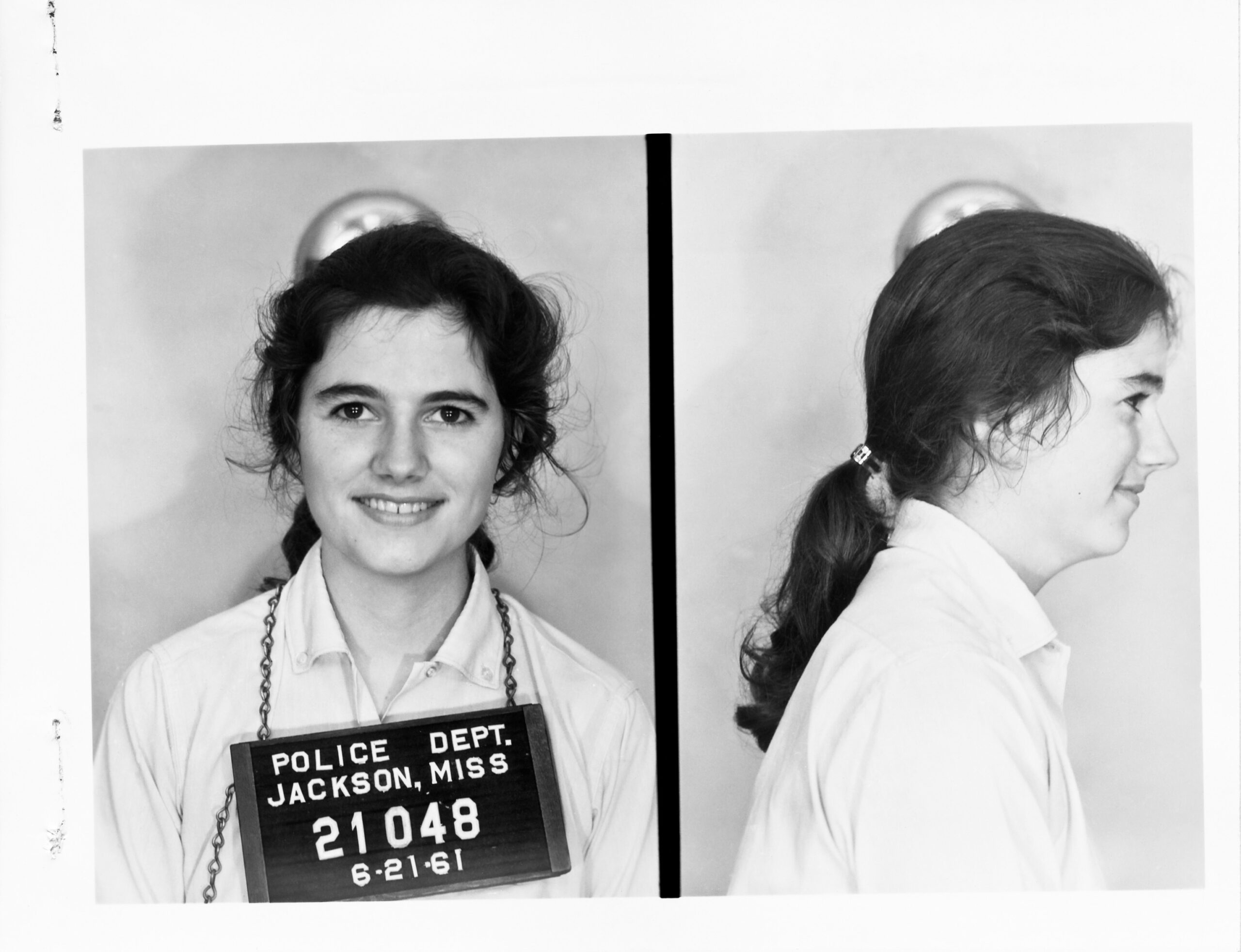
What we were doing—it was twofold, again—we were testing the system, doing a little stress test. But we were also, by the time I joined, we were also doing sort of a jail-in in Mississippi, that one of the ways to create pressure on the State of Mississippi was to have—first of all, to have all these Freedom Riders flooding into the state. But we all, as a condition of our being accepted, we had to agree that we would stay in jail for forty days. And that had to do with a quirk in the law in Mississippi, that you had forty days to post bail, and if you had not posted bail by forty days, you forfeited that right. So CORE was going to bail us out, but we were going to stay in that full forty days. That would force Mississippi, of course, to house us and clothe us and feed us and put up with all the national publicity that would arouse, and that would be one more way to pressure, at least the State of Mississippi, to discontinue this odious practice of segregated interstate transportation facilities.
Feingold Real extended her career in civil rights activism by continuing to work with CORE in Louisiana. She became a Freedom School teacher in the East Feliciana Parish teaching literacy, and showing Black residents how to navigate voter registration. In her oral history, she describes her philosophy of work as a Freedom School Teacher in 1963:
This wasn’t any sort of top-down endeavor, this is giving people the power to act on their own. It’s not trying to put pressure on the federal government to come in, and from the top-down force the white people in the South to do something that will allow Black people to do something else. I mean, in a way that was one of the ideas. But the basic idea was power to the people, giving people the initiative to make their own decisions and to have control of their lives. And that’s what I was doing on a person-to-person basis.
Chude Pamela Allen began participating in civil rights activism in 1964 when she heard the director of SNCC Freedom Schools, Staughton Lynd, speak in a seminar titled “Nonviolence in America” at Spelman College. Lynd inspired her to travel to Mississippi during Freedom Summer with the SNCC and help ensure Black people’s right to vote. She recalls the shift in political opinion about the protection of civil rights activists after the murder of Michael Schwerner, Andrew Goodman, and James Chaney in June 1964:
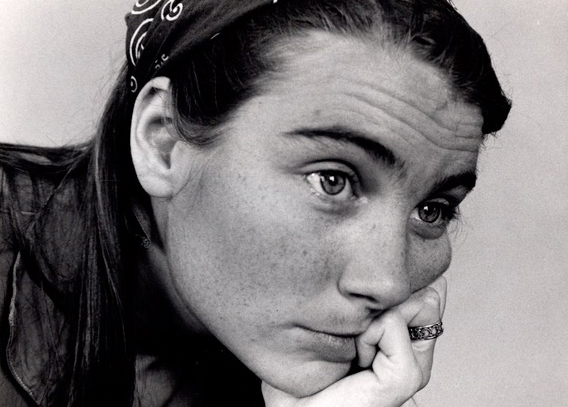
And one of the first things we were then asked to do was to divide up by states, and then contact our parents and relatives to contact their congressmen and ask for safety for the civil rights workers. I did that, and my father did contact his congressmen. And later I learned, because his congressman—at least one of them called him up and said, “Get her out of there.” And my father who, as I’ve defined, was not what we think of as a political activist, but he said very clearly to his congressman, “This is not about her safety. It’s about all their safety.” That kind of shift—and that’s just, again, that reference to the fact that when you get involved in something, people around you can also have their own—they grow, too, or they can grow, depending on whether they support you.
To help combat social and political barriers Black activists faced, Freedom Summer activists were an integrated group. In her oral history interview, Allen reflects on adjusting to safety precautions in the Deep South, and becoming more aware of the nature of racist violence. Allen recalls that white activists did not always respect the danger integrated activism created for their Black colleagues during Freedom Summer:
I heard one story, as an example, of a white woman who did not want to hide on the floor under a blanket when riding in a car with a number of Black people, mostly men. I can remember the worker who then said he wouldn’t ride in a car with her anymore, because she insisted on sitting up. She insisted, “I have the right to be seen.” But of course, in that situation, she wasn’t the one that was going to get beaten to a pulp.
Even across the country, Berkeley students and university administrators felt the social and political repercussions of Freedom Summer. In 1964, UC administrators punished students exercising political speech that the university deemed unacceptable—beginning the debate on the limits of campus free speech. Prohibited topics of speech included civil rights and anti-Vietnam War advocacy. One of the first students arrested during the Free Speech Movement, Jack Weinberg, tabled in Sproul Plaza with CORE to raise money for civil rights work after returning from Freedom Summer activism in Mississippi. His arrest for speech on civil rights sparked a spontaneous sit-in protest around the police car detaining him that lasted thirty-two hours until he was released (seen in the first photo). Atop the police car at the protest for Weinberg’s release, Cal student Mario Savio gave a rousing speech to the crowd on the fundamental right to speech, and later became instrumental in organizing the Free Speech Movement at Berkeley. Savio had also returned from Mississippi for Freedom Summer before his organization of the Free Speech Movement in 1964. Thus, it was not a coincidence that the Free Speech Movement became a mass protest on the UC Berkeley campus the same year Freedom Summer occurred. This debate on speech and advocacy played a pivotal role in shaping the protections of student and faculty rights to free political speech at UC Berkeley today.
UCB professor Leon F. Litwack witnessed this shift in student activism at the beginning of the Free Speech Movement. In his oral history, Litwack remarks on the similar philosophies of Freedom Summer and the Free Speech Movement:
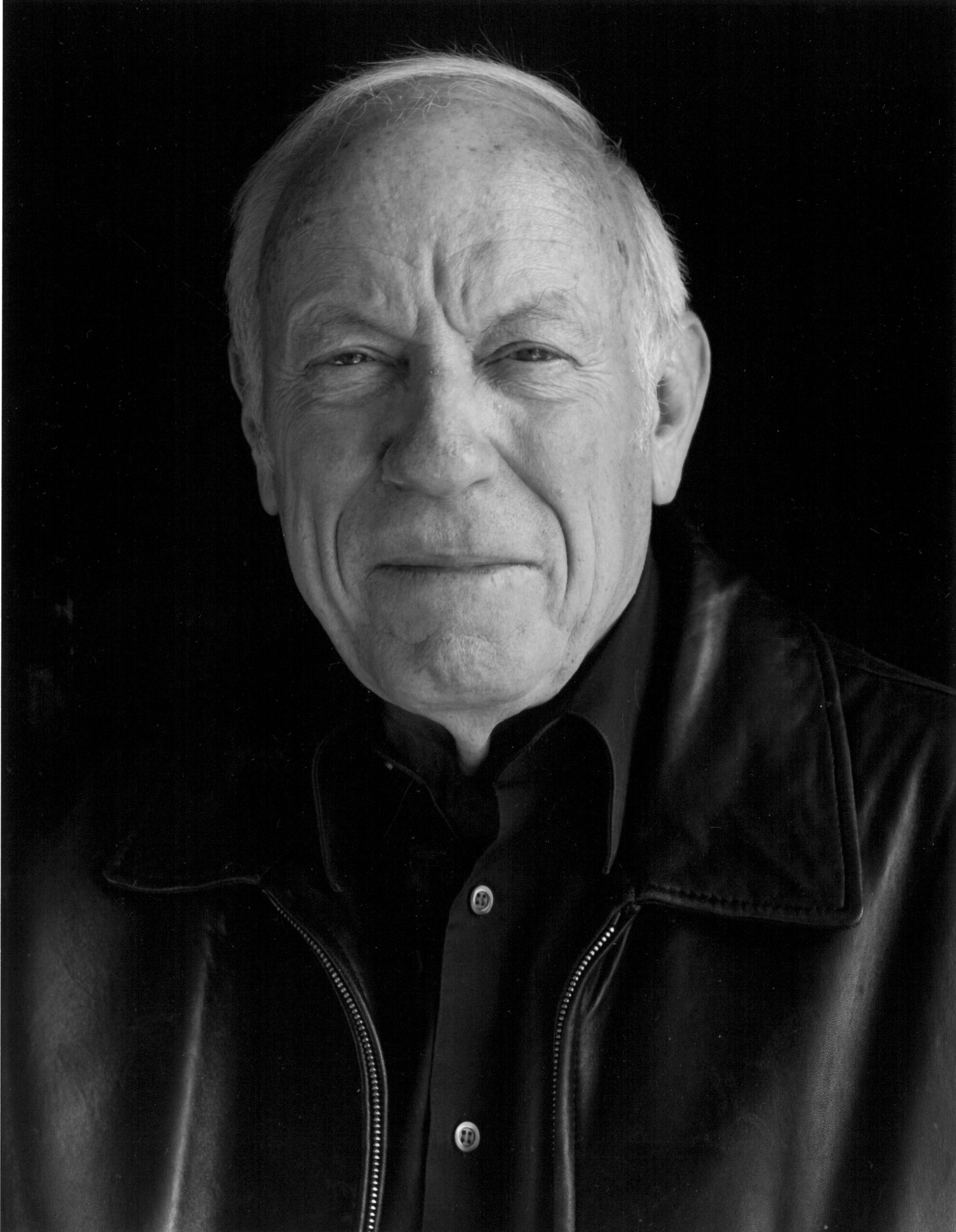
Of course, Mario Savio had just come back from the Mississippi summer when he came back to Berkeley in 1964. At places like Berkeley and other places around the country significant numbers of young people came to believe that direct personal commitment to social justice was a moral imperative and that social inequities are neither inevitable nor accidental but reflect the assumptions and beliefs and decisions of people who command enormous power, including the university administrators. Well, these were important perceptions. So what began at Berkeley as a protest to obtain a very traditional liberal freedom, freedom of speech and advocacy, soon brought into question the official version of reality.
In all, the legacy of Freedom Summer in 1964 is a historically significant moment that accelerated voting protections for Black people in the United States, and inspired the movement to protect free speech on all university campuses—starting at UC Berkeley. The passage of the Civil Rights Act of 1964 and the Voting Rights Act of 1965 solidified the work of civil rights activists, and encoded anti-discriminatory practices into federal law. In the sixty years since Freedom Summer, Berkeley students have utilized their freedom of speech to address many other political issues, and as a result, the university has a reputation for vibrant political dialogue. The debate about the limits of free speech continues to this day as the University of California system grapples with Pro-Palestinian student activism. Indeed, on August 19, 2024, UC Berkeley announced its new policy for “expressive activity,” revising the previous agreements on freedom of speech for the coming academic year.
To learn more about the history of student activism at Berkeley, the Oral History Center collections include many other interviews, including the SLATE and Free Speech Movement oral history projects. For more information on women’s activism throughout the twentieth century, please visit the Women Political Leaders collection. To learn more about Black activists involved in the Civil Rights Movement and their legacies, see Charles M. Payne’s book I’ve Got the Light of Freedom: The Organizing Tradition and the Mississippi Freedom Struggle. Finally, the UC Berkeley Library holds a wide variety of secondary sources on Freedom Summer, available here.
About the Oral History Center
The Oral History Center of The Bancroft Library preserves voices of people from all walks of life, with varying political perspectives, national origins, and ethnic backgrounds. We are committed to open access and our oral histories and interpretive materials are available online at no cost to scholars and the public. You can find our oral histories from the search feature on our home page. Search by name, keyword, and several other criteria. Sign up for our monthly newsletter featuring think pieces, new releases, podcasts, Q&As, and everything oral history. Access the most recent articles from our home page or go straight to our blog home.
Celebrating the Work of Freedom to Marry, Through Oral History
By Katie Gonzales
The Oral History Center’s Freedom to Marry collection features interviews from key members of the Freedom to Marry organization. Officially launched in 2003 by Evan Wolfson, the campaign worked to legalize same-sex marriage across the United States. The campaign originally worked on helping same-sex couples get married on a smaller case-by-case scale, as at the time, no state in the country had legislation protecting same-sex marriage. The first state to even do so was Massachusetts in 2004. Throughout the organization’s lifespan, same-sex marriage went from being legally unprotected on a state level to federally protected as an unequivocal right across the United States.

However, in June 2024, the Supreme Court countered this ruling in Department of State v. Muñoz, in which it declared that the right to bring a noncitizen spouse to the United States is not constitutionally protected. This ruling could be detrimental towards married same-sex citizens and noncitizens who would have to leave the United States, a country where their marriage is legal, back to a home country where it isn’t.
Given the June 2024 Supreme Court ruling, as well as this being Pride month, it’s a great time to look back on the work that Freedom to Marry did to legalize same-sex marriage. The lessons from the organization remain as important today as they were twenty years ago. When initially proposing the Freedom to Marry campaign to potential investors, Wolfson remembers:
I would be saying things to them like, look, if you just want to sprinkle some money around and do some ordinary building programs and helping people, I’m not the right person for you. And if you want to stay in your work up till now, which has been primarily in the Bay Area, and certainly only in California, not nationally, I’m definitely not the right guy for you. But if you really want to make a difference, what you really ought to do is support a campaign to win the freedom to marry. They went, “Marry?” “Yes, marriage. Marriage is the engine of change, marriage is what we’re going to have to be fighting for. You can do good work this way, but if you want to be transformational, you need to do this.”
One major battle that Freedom to Marry faced was when Proposition 8 passed in California. This ballot proposition intended to ban same-sex marriage measure passed in 2008. At the time, this was a massive blow to Freedom to Marry’s campaign, especially due to California’s reputation as a more progressive state. Tim Sweeney, a member of Freedom to Marry’s board of directors, recalls:
We were just devastated. It was devastating. Right? In California, the progressive beacon of the west, right? And we lost handily. It wasn’t close, which would have just taken a bit of the sting out of it. But what was interesting is the number of non-LGBT people who were outraged that their friends and family that they loved and cared about were basically being told you’re second-class citizens and your love is not legitimate. It created such a wave of we’re going to commit ourselves to fix this. And we have to be willing to be with them in their anger, invite them in in a new way, let them lead with us. All of that is hard to do, I think, in a social movement because you get worried they don’t really get it, their message is not your message, are they going to do some half measure, are they going to compromise, what do they know? But you got to kind of trust that they’re with you and you got to really in some cases step aside and realize, for instance, the message you may say to yourself or within the community is different than the one the non-LGBT community needs to hear. And maybe they need to have different messengers that just talk about the journey in a way that maybe an LGBT person wouldn’t sound authentic or real on. So that was just such an interesting moment. It’s almost like after Prop 8 we needed to step back a bit and let the world realize, “Wait a minute, what happened here? This is not okay.”
After the loss in California, support for LGBT rights increased due to the sheer amount of media coverage of the loss nationally. A Pew poll from 2010 cited that over 60% of Americans supported same-sex marriage, a drastic difference from polls in the 1990s that cited 60% of Americans against same-sex marriage. But by 2012, President Barack Obama made his support for same-sex marriage clear, stating that his views had “evolved” since his first presidential term. Thalia Zepatos, the Director of of Research and Messaging for Freedom to Marry recalls in her 2016 interview the impact of Obama’s statement:
I think really two things happened. One was that Governor [Martin] O’Malley really got involved in the campaign, but the big one was that our long-term effort to really engage the White House and President Obama came to fruition, you know not long before the election and President Obama made his statement in support of same-sex marriage, and within twenty-four hours, polling support for marriage among black voters in Maryland went up by twenty points. I mean, it was the biggest single day increase I’ve ever seen anywhere and I think it contributed just in a very great way.
By 2015, 37 states had legalized same-sex marriage, but it would not be a federal right until the Supreme Court case of Obergefell v. Hodges, which argued that same-sex marriage was a right under the Fourteenth Amendment’s Due Process Clause and Equal Protection Clause. On June 26, 2015, the Supreme Court announced its ruling: same-sex marriage was guaranteed as a fundamental right. The same night, the White House was bathed in rainbow lights, an unmistakable show of support for the ruling. Jo Deutsch, Freedom to Marry’s federal director from 2011-2015, recounted this event:
It was a truth that, from every level, we had won. It was an acknowledgement from the President of the United States that our lives and our marriages mattered, in a just obvious way…This is the symbol of America and the symbol of the President of the United States, all in rainbow color. It was just breathtaking and so beautiful…We had come so far through our lives from asking can we walk down the street holding hands, or can we actually, in an introduction, say this is my wife? And now to this moment, there we were in front of the White House, in all of its colorful glory, with all of these people holding hands. I can’t tell you how many proposals we saw, with people just dropping to their knees right and left. It was like, another one dropping to their knees, and everybody started to clap. It was just phenomenal.
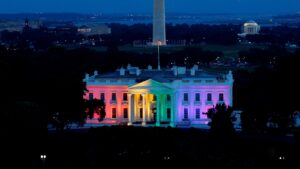
As the end of Pride month nears, it is important to remember that it hasn’t even been 10 years since the legalization of same-sex marriage in the United States. In many other countries around the world it is still taboo or even illegal. When we celebrate Pride month, it’s important to remember the work that many people and organizations did to ensure LBGTQIA rights, especially as they continue to face challenges. Celebrations can only happen as a result of triumph over tribulations, and should be remembered together.
Katie Gonzales is currently a third-year student at UC Berkeley studying English and Anthropology. She works as a student editor for the Oral History Center.
About the Oral History Center
The Oral History Center of The Bancroft Library preserves voices of people from all walks of life, with varying political perspectives, national origins, and ethnic backgrounds. We are committed to open access and our oral histories and interpretive materials are available online at no cost to scholars and the public. You can find our oral histories from the search feature on our home page. Search by name, keyword, and several other criteria. Sign up for our monthly newsletter featuring think pieces, new releases, podcasts, Q&As, and everything oral history. Access the most recent articles from our home page or go straight to our blog home.
New Oral History from the OHC – Greg Moore: Executive Director of the Golden Gate National Parks Conservancy
The San Francisco Bay Area is known for the kind of environmental advocacy that has become a model for regions around the country. There’s a long legacy, spanning decades, of people behind this work. Greg Moore is one of these people. Greg has dedicated his career to conserving public lands and making parks accessible for all. He, too, has become a model, someone to whom people throughout the country – and world – look for guidance.
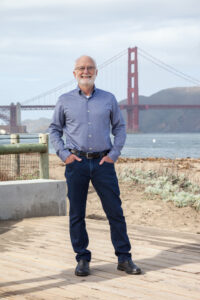
Greg served as the executive director of the Golden Gate National Parks Conservancy from 1986 until his retirement in 2019. The GGNPC was founded in 1981 and its mission is to preserve the Golden Gate national parks, enhance the park visitor experience, and build a community dedicated to conserving the parks for the future. But his work in the environmental sector began long before 1986, dating back to his time as a student at UC Berkeley in the newly-formed Conservation of Natural Resources School and College of Environmental Design, during the environmental decade of the 1970s when the Environmental Protection Agency was formed and regulatory laws, like the Clean Water Act, were passed. And even before that, when he was a ranger with the National Park Service.
I had the privilege of sitting down with Greg in 2022 to interview him about his life and work. In preparation for the sixteen hours I would end up spending with him, I spoke with a number of people who know him in different capacities – former fellow National Park Service rangers; as well as Conservancy board members, employees, and donors. One thing was clear: Greg is universally respected for his work and his collegiality. I kept hearing about how, as both a colleague and manager, he listened to people and carefully considered their perspectives. About how, as the executive director of the Conservancy, he wrote heartfelt letters to board members each year, letters that they all not only save, but cherish. About how he would write and perform in an annual musical parodying popular songs for year-end parties.
But what struck me the most was how present Greg was during each phase of our interview sessions. Whether we were discussing how he developed a love for music as a child; his studies at Cal and then later at the University of Washington; meeting his wife, Nancy, and raising their son; or his love for parks; the development of his career; managing a large staff and multi-million dollar fundraising campaigns; and working to make parks accessible for all, Greg took every question I asked seriously, responding sincerely and weaving in humor throughout.
Greg is perhaps best known for his work with the Conservancy. He played a role in the creation of the organization, which he discussed in more detail in his oral history, before becoming the executive director. There are an incredible array of projects on which he worked during his tenure with the Conservancy, like various habitat restorations, converting the Presidio from an Army base to a park, transiting Fort Baker from a military base into a national park, promoting citizen science through the Golden Gate Raptor Observatory, transforming Crissy Field into one of San Francisco’s crown jewels and creating the beloved Crissy Field Visitor Center, developing community partnerships and youth programs, and shepherding the Tunnel Tops project into existence. The list goes on.
The underlying theme of each of these projects was the drive to make parks accessible for everyone. “Parks for All” is the beating heart of the Conservancy’s mission. Here’s what Greg said about the origin of the mission:
“The ‘Parks For All’ came when the Conservancy was trying to think through how to simply and straightforwardly describe our mission. The Conservancy had a mission statement, but like many it was probably twenty-five to thirty words long, and I began thinking about how to put that in simple words that were very direct and, in some way, have the power-of-three impact. That’s when I began thinking, Well, of course, we’re about ‘parks.’ These are the physical places that we need to transform and enhance. Then we’re about ‘for all’ because these places are owned by every person in the United States as national parks, and then our final responsibility is ‘forever’ – to pass them from one generation to the next. It not only summarized our mission but almost described a theory of change that first you have the places and to make them for all youth to improve and enhance them. You have an opportunity to engage people in their enjoyment, in their stewardship, in their contributions for all, and then finally all the restoration work that cares for these places that you’ve enhanced and taken care of.”
Greg wanted to make sure people were aware that the parks existed, they felt comfortable there, and that they were relevant to the visitor’s life experience. He did this by bringing communities into planning conversations, implementing a bus route that would drive people from their neighborhoods to the parks and then back again, partnering with public libraries, and creating a multitude of programs – for kids, related to art, and citizen science for civilian park goers. Greg’s commitment to the Conservancy’s simple mission is what made the organization so successful and such an integral part of life in the Bay Area. And Greg’s interest in working with communities and listening to people – his colleagues, board members, donors, and park users alike – is what has made him such a towering figure in the Bay Area’s environmental movement.
It is with great excitement that we announce Greg Moore’s oral history is now publicly available.
Out of the Archives: Patrick Hayashi: From Mail Carrier to Associate President to Artist
by Zachary Matsumoto
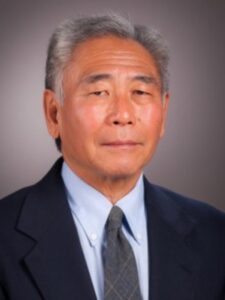
“My mom told me that an old deaf man, Mr. Wakasa, was walking his adopted stray dog around the perimeter of the camp,” recalled Patrick Hayashi. “His dog caught in the barbed wire fence and Mr. Wakasa went to save him and release him. The sentry ordered him to back away from the fence, but because he was deaf, he couldn’t do it, and so the sentry shot and killed him.”
This is the story of James Wakasa’s murder, which Patrick Hayashi’s mother told him when he was growing up. Wakasa was one of over 100,000 Japanese Americans incarcerated by the US government during World War II. In the incarceration camp of Topaz in the desert of central Utah, an armed US soldier shot and killed Wakasa. His death sparked outrage among Topaz’s incarcerees. Although individuals in the Japanese American community contest some of the details of Wakasa’s death, it remains a key, painful moment in the incarceration experience that Japanese Americans have passed down to their children.
The story of Wakasa’s death certainly remained an important memory for Hayashi, a Sansei—or third generation Japanese American—who was born in Topaz while his parents were unjustly imprisoned there. Hayashi discussed his life and career with the Oral History Center at UC Berkeley. His interview was conducted as part of the Japanese American Intergenerational Narratives Project, which explores trauma and healing across generations for Japanese Americans whose families were incarcerated during World War II.
As a young boy, after their release from the prison camp, Hayashi grew up with his parents in Hayward, California. His mother maintained ties to the Japanese American community, largely through church. However, when he was still young, Hayashi’s mother passed away of heart failure. This deeply saddened Hayashi’s father, who now carried the responsibility of raising a family as a single parent. Additionally, according to Hayashi, his father must have felt the guilt and shame from his incarceration experience in World War II. Nonetheless, Hayashi’s father exhibited resistance. He was a “no-no,” meaning he said “no” to two questions in an infamous loyalty questionnaire the US government forced upon the imprisoned Japanese Americans during WWII. The questions asked if one would be willing to serve in the US Army, and if one would swear loyalty to America and rescind loyalty to Japan. This sparked outrage among the Japanese American community, who were asked to serve a country that imprisoned them, and rescind a fealty to Japan that they didn’t have. Hayashi’s father’s “no, no” response was, as Hayashi believed, a “principled stand” against these unreasonable questions.
But his father never mentioned this resistance until Hayashi was an adult. Like many post war Japanese American families, Hayashi’s family did not often discuss their incarceration experiences.
Similar to his father, Hayashi also recalled feeling shame and guilt around incarceration and the war. In high school, he felt particularly ashamed of his identity when his class discussed WWII and the atomic bombs that destroyed Hiroshima and Nagasaki. At that time, Hayashi later recollected, “I was preferring not to be Japanese.” He also experienced a disconnect with the Japanese American community, largely due to his mother’s passing.Nevertheless, Hayashi shared many fond memories of his childhood, from reading Sherlock Holmes and science fiction books as an elementary schooler to becoming a star tennis athlete in high school.
If Hayashi felt shame due to his family incarceration, he channeled it into his work, starting in the 1960s. When reading his oral history, I noticed a theme of activism exhibited across his career in a near continuous fight for justice. After dropping out of college and working as a mail carrier, he found his calling in literature and became a UC Berkeley professor in the newfound Asian American Studies Department—one of the first such departments ever created. These developments for Hayashi came at the time of 1960s social movements in America. In one such movement, student protests in California universities led to the creation of an Ethnic Studies program at UC Berkeley.
Hayashi later became involved as a UC administrator, first working for Cal as the head of Student Conduct. After an investigation revealed that UC admissions were discriminating against Asian American applicants in the 1980s, Hayashi was appointed Associate Vice Chancellor of Admissions and Enrollment. In this position, and later as Associate President in the University of California, Hayashi worked on policy development and acted as an advocate for student applicants. He played a key role in fighting unfair admissions policies, such as the National Merit Scholarship Program (for discriminating against marginalized groups) and the Scholastic Aptitude Test or SAT (for not only explicitly favoring privileged students, but for also being, as Hayashi noted, a “bad test”).
One example of his advocacy came through at a meeting he attended soon after becoming Associate Vice Chancellor. In this meeting, Harold Doc Howe, Lyndon B. Johnson’s former Secretary of Education, communicated views with which Hayashi disagreed. Despite feeling nervous, Hayashi publicly challenged Howe in front of his colleagues. “My hands are actually trembling visibly in front of me and I said, ‘Howe begins with the assumption that a person’s writing ability reflects that person’s thinking ability. I don’t begin with that assumption. Instead I turn it into a question, and the question is to what extent does a person’s writing ability reflect that person’s ability to think?’ I said, ‘When you pose it as a question, the answer becomes obvious, it depends. If a person is new to the country or if the person is poor and has attended poor schools where the quality of education is low, then it’s incorrect and unfair to think that a person’s writing ability reflects that person’s thinking ability. Because oftentimes people just haven’t had the opportunity and the assistance to develop writing ability.’”
This, to me, demonstrates Hayashi’s sense of right and wrong – a fight against prejudiced assumptions in the admissions process.
Over time, too, Hayashi started to come to terms with the incarceration experience that his family hardly discussed and loomed over him like a cloud. One key moment for him occurred during his work as a UC professor. After reading James Baldwin’s Notes of a Native Son, in which Baldwin discusses his experiences with racism and understanding the good his overbearing father did, Hayashi felt a better understanding both of his own father and his emotions. According to Hayashi, “[Baldwin] helped me understand my rage. And how if you’ve been suppressed constantly by racism, that goes somewhere and then it explodes. That was my pattern, and then it made me realize that it must have been my father’s experience as well. He was a proud man, he was smart, but it was clear, the injustice was clear to him and so it must have gone somewhere.”
To me, Hayashi’s understanding of Baldwin speaks to the emotional scars of incarceration that burdened many Japanese Americans. After experiencing racist injustice during World War II, anger would seem like a reasonable response. Perhaps the silence of many Japanese Americans after the war was the product of the internal, bubbling anger that people of color have felt throughout American history.
As Hayashi continued to come to terms with his family’s incarceration experience, James Wakasa’s story reemerged as an important moment. In the late 1980s, Hayashi visited an art exhibition from the incarceration camps, filling him with emotion. He recalled, “I choked up more and more and then the fourth painting I saw was Chiura Obata’s sumi-E sketch of James Wakasa falling over after he was shot, and I started to sob. It was terribly embarrassing, but everyone around me was mainly Nisei, they were crying too. That’s when I started revisiting the camps in a systematic way.”
Hayashi held true to his word. Later in life, he became more and more involved in the memorialization of Topaz, the camp of his family’s imprisonment. After retirement from Cal, Hayashi played a role in the creation and work of the Topaz Museum, located near the site of the former incarceration camp. He taught workshops at the museum for teachers in Utah, served as the keynote speaker at a 2016 Day of Remembrance event, and interviewed the Topaz class of ‘45—high schoolers who graduated in 1945 as Topaz incarcerees. Hayashi also took up painting as a major passion and a creative expression of his identity.
Hayashi’s life story is a reminder that one does not need to be defined by internalized pain of the past, but can instead come to terms with that pain and tell its story. The interviews and life stories told throughout the Japanese American Intergenerational Narratives Oral History Project illuminate themes of memory, belonging, and healing. Hayashi’s life fully demonstrates each of these themes and serves as an inspiration for Japanese Americans pained by the past but who also want to make a difference.
To this day, he remains active in preserving the memory of incarceration. In 2016, Nancy Ukai, an activist who fought the auctioning of incarceration art, approached Hayashi with a request to create a painting for a Day of the Dead altar at a Japanese American cemetery. The request? To paint James Wakasa’s soul. His story, a source of intergenerational pain and important in Hayashi’s own life, now lay in the hands of Hayashi: a man who healed.
Patrick Hayashi’s oral history transcript is available on the OHC’s website.
Zachary Matsumoto is a sophomore at UC Berkeley currently studying History and participating as an Oral History Center URAP apprentice. He was drawn to the Oral History Center after attending a Bancroft Roundtable presentation about the Japanese American Intergenerational Narratives Oral History Project. American history is a current academic interest of his, including the histories of communities relating to his background as a Chinese and Japanese American. In his free time, Zachary likes to go for runs, watch sports, and play taiko.
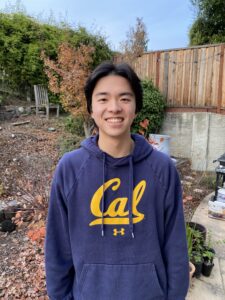
OHC Staff Reflects on 2023
The Oral History Center has been as busy as ever this year, publishing hundreds of hours’ worth of interviews online. On top of making this wide range of voices available to the public, my colleagues have also used these collections of The Bancroft Library to interpret, frame and share new stories about our past. In November, the Japanese American Intergenerational Narratives project was launched, featuring interviews with the descendants of the incarceration camps during World War II. Not only are the transcripts online, but there is also a podcast and a deeply moving work of graphic illustrations that draw meaning from the interviews. In October, Todd Holmes and Roger Eardley-Pryor designed, wrote, and launched a new museum exhibit, Voices for the Environment: A Century of Bay Area Activism at the Bancroft Library Gallery, which runs through November 2024. There is an accompanying digital exhibit, which will feature podcasts, mini-documentaries, and a curriculum guide for students and teachers that will live on long after the gallery exhibit closes.
Center staff showed great leadership in the field of oral history. There is always lots to say about our oral history education programs, but what was new this year was OHC participation in a pilot historical methods course for undergraduate majors of UC Berkeley’s history program. Oral historian Shanna Farrell took a seat this year on the council of the Oral History Association, and Amanda Tewes and Roger Eardley-Pryor also led panels and gave papers at the OHA annual meeting. Todd Holmes, together with our Advanced Institute alum Emi Kuboyama, won the Autry Prize from the Western History Association for their documentary on the redress of the incarceration of Japanese Americans during World War II.
Communications and editorial lead Jill Schlessinger created, oversaw, and updated our editorial process. On the back end of our production, David Dunham led the team that transferred and preserved almost two thousand hours of audio-video that was trapped on defunct recording formats. Of course, we couldn’t have done this work without the help we get from student employees in production, preservation, and communications. Finally, following a competitive national search, I would like to celebrate the arrival of the new historian of science, technology, and medicine, Liz Semler.
I want to thank every member of the OHC staff for a great year! From all of us, we wish you all a peaceful and magical holiday and a wonderful 2024!
–OHC Director Paul Burnett
OHC Staff Reflections
I am grateful to have celebrated my 21st year with the Oral History Center. It is a privilege to support the efforts of our interviewers in producing the array of oral histories produced this year. I relish the opportunity to work with student workers, undergraduate research apprenticeship program [URAP] participants, and librarian interns. Students are integral to our production and preservation processes, ensuring that our transcripts, audio, and video are accessible and preserved. They also bring new perspectives and insights into our oral histories. It’s a cliche to say win-win, but our student workers and interns consistently share how participating with the OHC enriches their academic, intellectual, professional, and human interests. We could not do a fraction of the work we do without them. Special thanks this year to the following students and interns that contributed in countless ways to the OHC: Max Afifi; Sadie Baldwin; Peter Beshay; Hue Bui; Mina Choi; Georgia Cutter; Jason de Haaff; Nikki Do; Ava Escobedo; Leah Freeman; Samantha Goodson; Meiya Gujjalu; Anthony Lin; Lina Matine; Solomon Nichols; Guisselle Salazar; Mela Seyoum; Joe Sison; Manyi Tang; Kate Trout; Erin Vinson; and Cathy Zhang.
–David Dunham
My fifth year at OHC was the busiest yet! I’m especially grateful for exceptional and collaborative colleagues at OHC. This past year, we curated our first oral-history-focused gallery exhibit with videos and a podcast; we promoted our innovative Japanese American Intergenerational Narratives project, including graphic art and a superlative podcast; and we continued conducting and publishing outstanding oral history interviews. I’m also grateful that our new colleague, Liz, joined the OHC team. I hope you and yours celebrate all that’s good at the end of this year, and that next year is even better.
–Roger Eardley-Pryor
What a year 2023 has been! While I’ve had the privilege of working on several projects this past year, I’m very proud of working with Roger Eardley-Pryor and Amanda Tewes on the Japanese American Intergenerational Narratives project, which launched in November. We interviewed 23 survivors and descendants of WWII-era site of Japanese American incarceration, and produced a podcast and commissioned an artist to make graphic illustrations based on these oral histories. It’s been an extremely meaningful project to be a part of, and I’m grateful for the collaborative efforts of my colleagues to bring it to fruition.
–Shanna Farrell
Looking back on the year of 2023, I am struck by the power of collaboration. This year the Oral History Center curated the multimedia exhibit, Voices for the Environment: A Century of Bay Area Activism, at The Bancroft Gallery, a collaborative effort that was beyond rewarding. I am extremely grateful for the opportunity to do this work and collaborate with an amazing cast of colleagues.
–Todd Holmes
I look forward every year to this opportunity to acknowledge the talented team of student editors that make the pace of our work possible. They do the work of professional editors, create abstracts for oral histories with missing metadata, write articles about our narrators and projects, and provide invaluable suggestions in our department’s quest for continuous improvement of our workflow and processes. We said farewell to some long-term employees who recently graduated: Mollie Appel-Turner, William Cooke, Adam Hagen, Serena Ingalls, and Shannon White; I’d like to say thank you to our ongoing editor, Timothy Yue; and welcome two new staff, Nikhil Jagota and Lauren von Aspen. My favorite memory from 2023 was learning about how the experience of working with oral history has had a profound impact on how our student employees see things. I hope you will enjoy reading about their reflections as much as I did in this article, Connection, Insight, Inspiration, Truth: Berkeley undergraduates reflect on oral history.
–Jill Schlessinger
This past year has been a wild ride! I said goodbye to multi-year projects, moved across the country, and started a position at the Oral History Center in October. Although it’s only been a few months, I’ve already learned much in my new role, including technical details like how to use video recording equipment and more broadly about UC Berkeley and the surrounding area. As with any big change, sometimes I feel overwhelmed with the new-ness of it all. But change brings opportunity! I’m grateful for the chance to forge a new path as an interviewer and historian here at the Oral History Center and am excited to discover what the upcoming year holds.
–Liz Semler
In November 2023, I was honored to be a part of a great team (along with Roger Eardley-Pryor and Shanna Farrell) that launched the Japanese American Intergenerational Narratives Oral History Project, featuring 100 hours of oral history interviews with 23 Japanese American narrators who are survivors and descendants of two World War II-era sites of incarceration: Manzanar in California and Topaz in Utah. This public launch highlighted the release of most of the 23 oral history interviews, a four-part podcast series based on these original interviews, and graphic art inspired by the stories and themes from the interviews. It has truly been a meaningful experience to be a part of such important work about intergenerational memory and healing. Many thanks to the National Park Service’s Japanese American Confinement Sites Grant for funding this phase of the project!
–Amanda Tewes
The OHC Welcomes Liz Semler
The Oral History Center is pleased to welcome Liz Semler, our new historian of science, medicine, and technology!
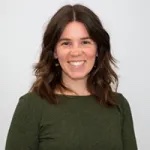
Liz comes to the UC Berkeley Library from the University of Minnesota’s Program in the History of Science, Technology, and Medicine. Elizabeth Semler is a medical and business historian and received her PhD from the University of Minnesota’s Program in the History of Science, Technology, and Medicine, where her academic work focused on the relationship between chronic diseases and diet in the United States and the Nordic countries. Her dissertation interrogated the intersections of epidemiological research, American business interests, and the development of public health prevention policies in the twentieth century. During her time at the University of Minnesota, Elizabeth taught undergraduate and community education courses on medical and technological history. She also participated in numerous public-facing history projects, including museum exhibits, educational websites, and film documentaries. Taken together, this work has fed Elizabeth’s passion for collecting, preserving, and making history accessible to broad audiences.
We sat down with Liz for a Q&A to get to know her better, which is below.
Q: When did you first encounter oral history?
A: I first encountered oral history in the first year of graduate school – I had the opportunity to participate in a project documenting the history of cardiovascular innovations at the University of Minnesota. This involved interviewing practicing clinicians, research scientists, and academicians about their contributions to cardiovascular care. It was a very different experience than studying archival documents and other static sources. Although I enjoy archival work, it was exciting to be able to ask questions and directly interact with narrators!
Q: What role did oral history play in your previous work?
A: I have worked on numerous public history projects over the past decade that have contained oral history components, with topics ranging from medical to the history of computing. Oral histories were also an important component of my dissertation project, which focused on the relationship between coronary heart disease and diet in the mid-to-late twentieth century.
Q: Which interviewers have been your biggest influences, oral historians or otherwise?
A: I really enjoy listening to Anna Sale’s interview podcast Death, Sex & Money. She does a great job of discussing challenging subjects with folks and I have learned a lot about how to tackle difficult, sensitive topics from listening to those conversations. I just learned the podcast may end in December, 2023. Who knows what will happen to archived episodes, so I recommend people give it a listen while they can!
Q: What projects are you most excited to work on at the OHC?
A: I’m still in the process of familiarizing myself with upcoming projects at OHC but I’m already very excited by the resources here at University of California, Berkeley as well as in the broader UC system. As a medical historian, the collections at UCSF have grabbed my attention – I’m looking forward to building connections across campuses and, hopefully, bringing together the resources of the Bay Area in collaborative projects.
Q: What is your dream oral history project?
A: Before COVID-19 shuttered things in 2020, I was in the process of interviewing folks who had worked at the midwest-based supercomputer company Cray Research. The company’s history is really interesting but extant archival materials are minimal and little has been written about Cray from an historical perspective. I’d like to finish capturing people’s experiences at Cray, if possible!
Welcome, Liz!
OHC URAP Student Zachary Matsumoto Reflects on Work with Japanese American Intergenerational Narratives Project
Zachary Matsumoto is a sophomore at UC Berkeley currently studying History and participating as an Oral History Center URAP apprentice. He was drawn to the Oral History Center after attending a Bancroft Roundtable presentation about the Japanese American Intergenerational Narratives Oral History Project. American history is a current academic interest of his, including the histories of communities relating to his background as a Chinese and Japanese American. In his free time, Zachary likes to go for runs, watch sports, and play taiko.
Reflections on Work with the Japanese American Intergenerational Narratives Project
by Zachary Matsumoto

This fall of 2023, I became a URAP student at the Oral History Center under the guidance of Shanna Farrell, Amanda Tewes, and Roger Eardley-Pryor. My work throughout this semester largely consisted of researching, analyzing, and writing about the oral histories of the Japanese American Intergenerational Narratives Project, as well as the Japanese American Confinement Sites Project. These oral histories highlighted a historical event that greatly affected my own family.
In 1942, the United States government, at the beginning of its involvement in World War II, issued Executive Order 9066. This order imprisoned Japanese Americans living on the West Coast and placed them in remote prison camps across the country. My paternal grandparents and their families were among them. Growing up, my parents told me of my grandparents’ histories as incarcerees, stressing the wrongdoing and unfairness done to them by the US government. As I grew up reading and watching material on Japanese American incarceration, I began to understand the details of the incarceration experience: how truly unfair it was; the crippling effects of losing a home for a remote prison camp; the silence of incarcerees afterward; and how themes of incarceration endure today.
Fast forward to 2023, when I joined the OHC as a URAP student and explored the oral histories of Japanese Americans. One component I learned from these oral histories was the traumatic intergenerational effects of incarceration: the pain and guilt that incarcerees passed down to their children, and at times even their grandchildren. This was a very eye-opening experience for me, as I personally felt as if the incarceration of Japanese Americans was an important, but almost distant historical event in my own life. Reading these oral histories, as well as listening to a podcast series “From Generation to Generation: The Legacy of Japanese American Incarceration,” based on the very same interviews, was at times an emotional experience. Hearing of descendants losing their sense of belonging, feeling disconnected with their culture, and living without the knowledge of their families’ incarceration experiences was heartbreaking to hear.
But what really struck me about these oral histories was not only the intergenerational pain and sorrow, but the agency exhibited by the project narrators after incarceration. This is something I knew but not really understood the scope of. This agency, as recounted in the oral histories, was both public and private. Patrick Hayashi, a man born in the incarceration camps and whose oral history I studied extensively, demonstrated activism as one of California’s first Asian American Studies professors and by fighting against prejudiced admissions practices. But more privately, he vowed to reexamine the trauma of his family’s past through creating artwork and educating Utah teachers on incarceration. Other individuals, in the 1970s and 1980s, participated in the redress movement, in which Japanese Americans questioned the wrongdoing of WWII incarceration and successfully drew attention to this experience. This eventually led to a formal apology and reparations paid by the US government.
Even in more recent years, the agency and activism of individuals in the oral history interviews shines brightly. Ruth Sasaki, an author, joined an organization named Tsuru for Solidarity: a group that fought against the forced incarceration of migrants crossing the US-Mexico border. After the Trump administration detained migrants at the US-Mexico border, including children, as part of the Zero Tolerance Policy, Sasaki and twenty-six other Tsuru for Solidarity members flew to Oklahoma to protest, along with a large number of Native American, Latino, and African American activists. Sasaki’s story, in particular, served as a reminder for me of the living memory of Japanese American incarceration and how that community in particular could serve as a key fighter: a guard against the unjust, unprovoked incarceration of marginalized groups today.
One moment of agency, in particular, was very personal for me and my interests. Roy Hirabayashi, a longtime San Jose resident and the descendant of Topaz survivors, recalled the founding of San Jose Taiko, a taiko (Japanese drumming) performance group. As San Jose Taiko began its performances and found its sound and style, Hirabayashi realized he did not know many traditional Japanese themes and rhythms for playing taiko; instead, he took rhythmic inspiration from music he was exposed to in the Bay Area, such as R&B and Latin soul. According to Hirabayashi, “We felt we were establishing pretty much early on that we, in Asian American sound, using what we called the Japanese drum, the taiko, our version.” For Hirabayashi, taiko was not just a performance instrument but an intentional expression of his developing Asian American identity. This, to me, shows his agency and sense of self. Reading Hirabayashi’s oral history also highlighted my personal connection to this interview. As a child, my mom drove me forty minutes to Santa Rosa so I could learn and practice taiko. Now, as a sophomore in college, I am a current member of Cal Raijin Taiko, UC Berkeley’s taiko organization and performance group. The fact that an instrument that occupies an important place in my own life is wrapped in the history and agency of Japanese Americans captivates me and brings me closer to the history of the Japanese American experience.
Over the course of my URAP experience in the Oral History Center, I felt my eyes further opened to the individual experiences of the descendants of incarcerees. What stands out was not just their guilt and attempts to cope with the scars of incarceration, but instead their strength through identity and activism. As a Japanese American myself, I feel proud to be part of this legacy of strength. In the future, I hope to continue exploring my identity, and what it means to be a descendant of the incarceration camps. As I explored the oral histories in the Japanese American Intergenerational Narratives Project, I encountered personal questions: why am I not feeling the same burden as the descendants of incarceration? Why do I feel as if incarceration was a memory without a strong effect on my own life? These questions remain in my mind, and I will continue to seek answers to them throughout my life.